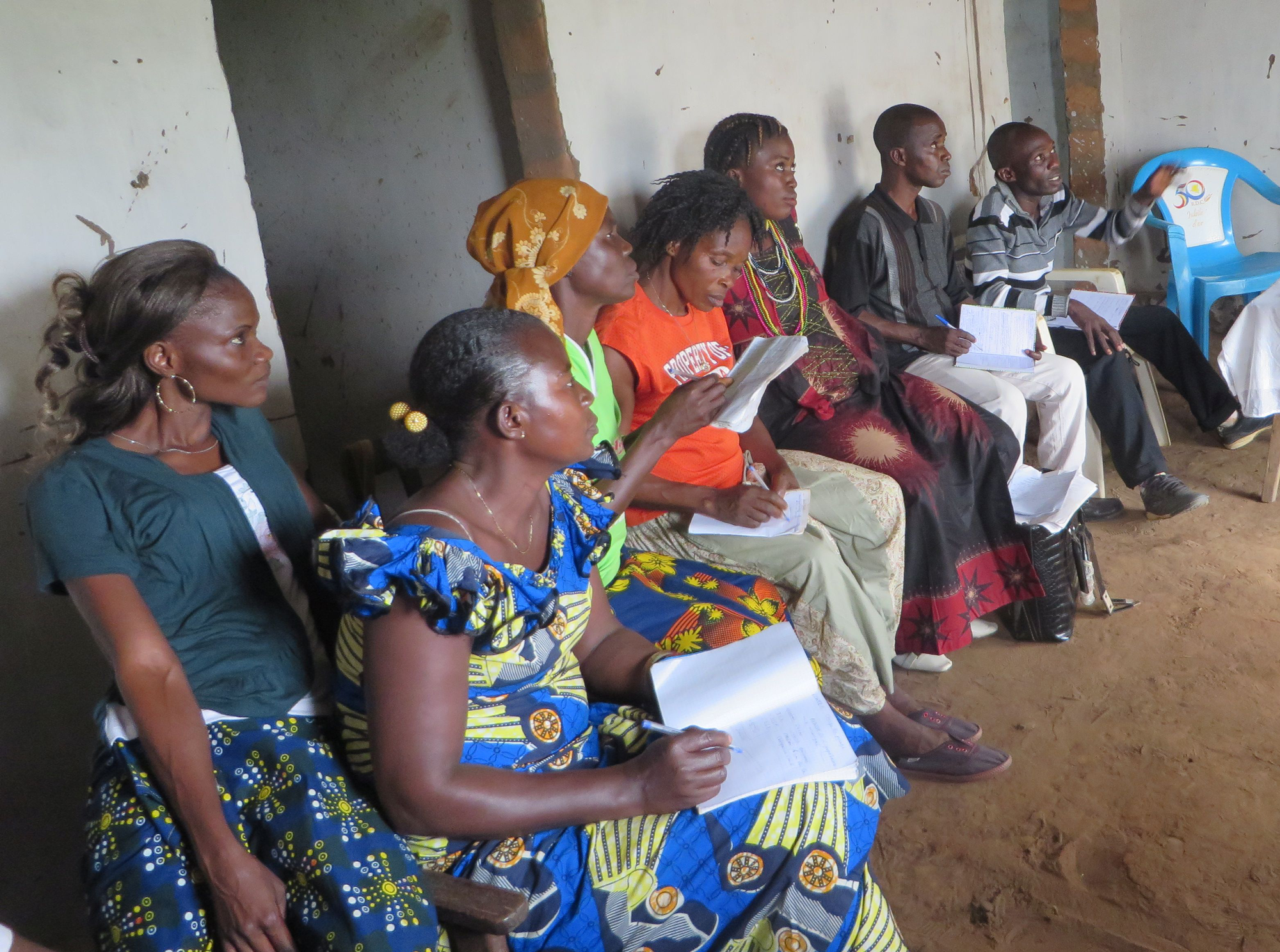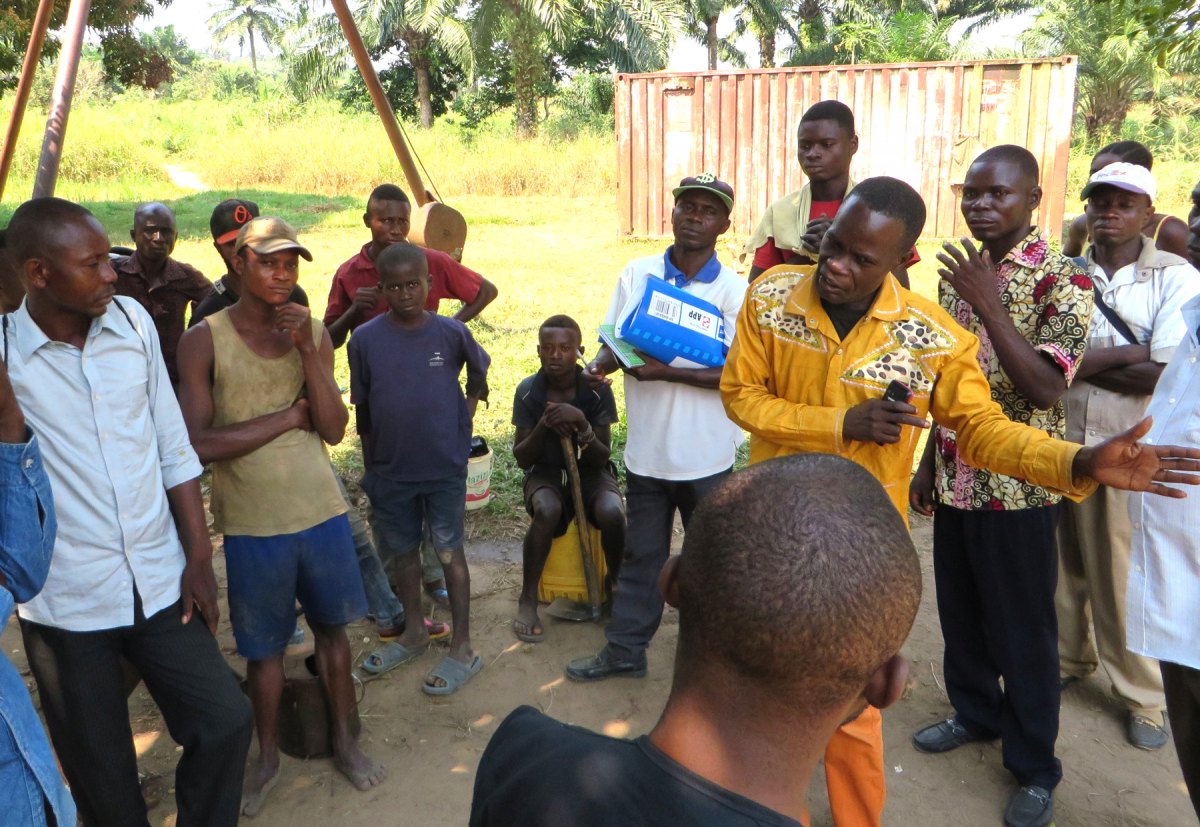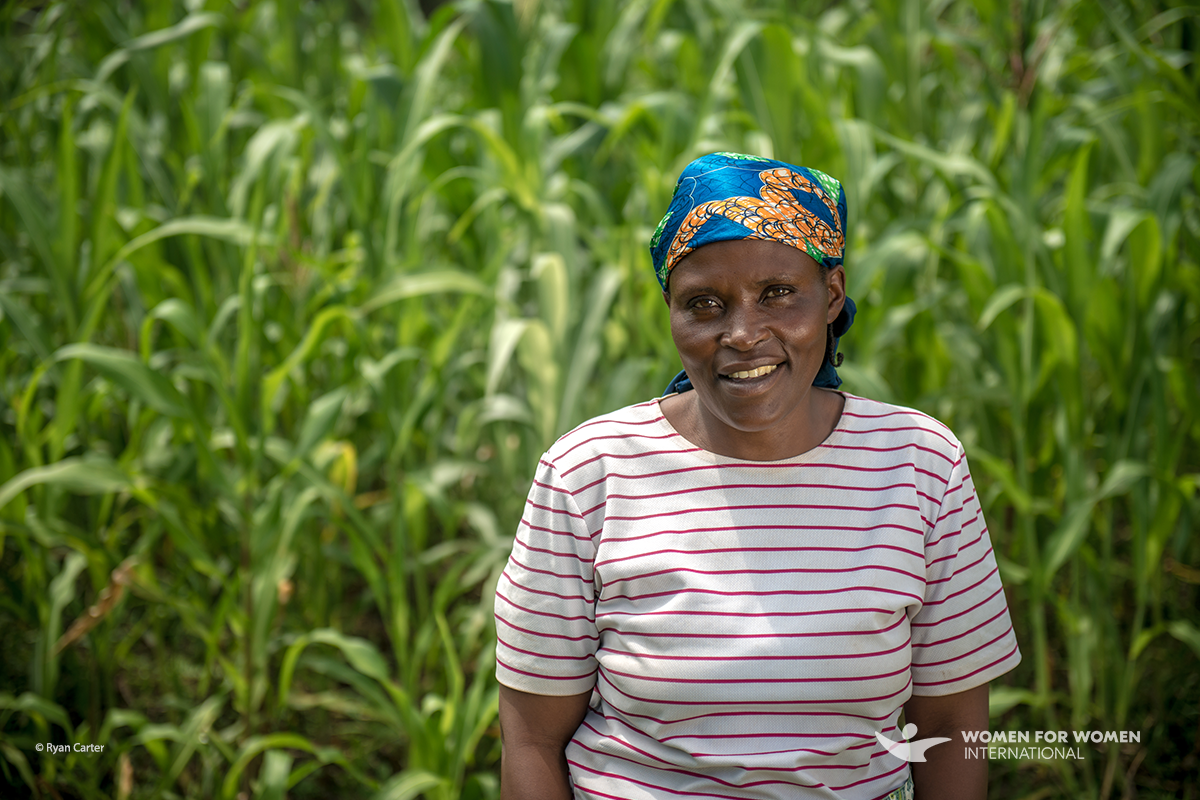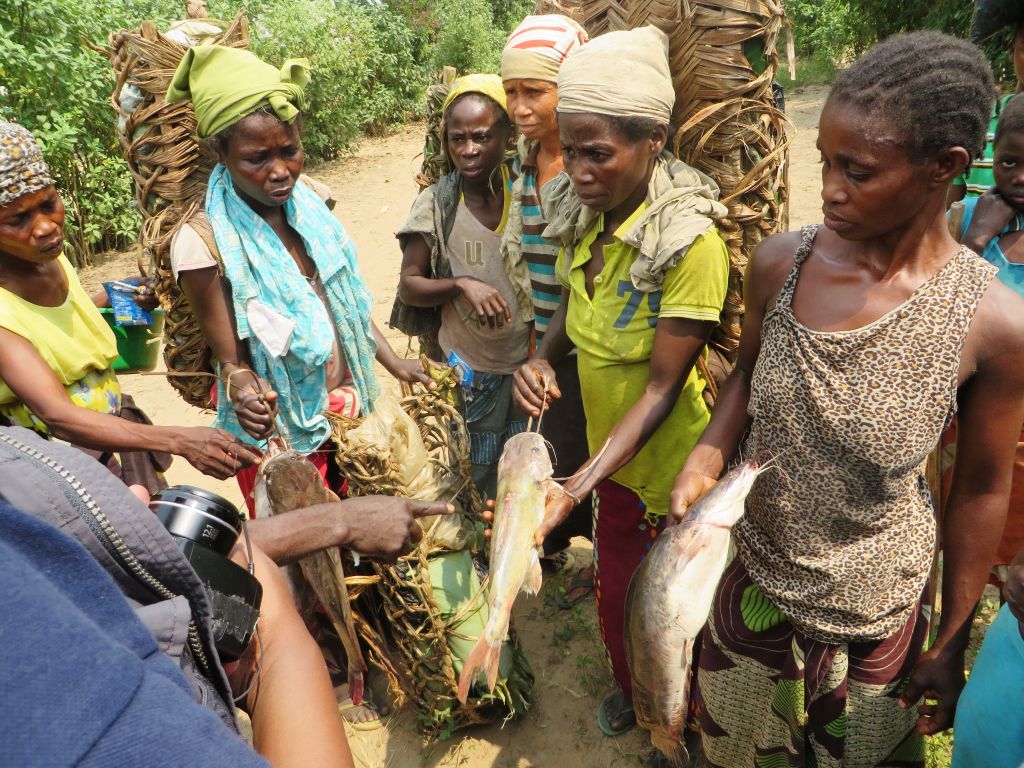Governance grows in Mangai
Establishing the Governance Working Group in the Mangai landscape in the Democratic Republic of Congo (DRC) is a crucial step in managing forests landscapes
Created between 1940-1944, the Mangai protected area has an area of 1,176,875 hectares and is an IUCN Protected Area Category VI. More than one million inhabitants located in many villages and five cities (Idiofa, Dibaya-Lubwe, Mangai, Panu, Eolo) directly depend on the resources of this protected area for their survival. It is one of the sites selected as part of the Stabilizing Land Use Project, along with sites in Ghana, Uganda, the Democratic Republic of Congo (DRC) and Tanzania. Unlike most sites in this project, the Mangai Protected Area does not have a local structure for natural resource governance.
Given its large area and the difficult socio-economic and environmental context linked to the landlocked area, a wide variety of resource users in this protected area (subsistence and industrial farmers, hunters, fishers, timber producers, product operators, non-timber forest producers, pastoralists, etc.) are also stakeholders in its management. The establishment of a Governance Working Group (GWG) of this protected area is an important step towards the stabilization of use of his land. This could help alieve the problem of uncontrolled resource use that has led to agricultural land degradation, deforestation, degradation of wildlife and habitat, degradation of the fish population, and poverty for local populations.
Making a GWG in Mangai
The approach for establishing a GWG for the Mangai landscape consisted of two steps: field data collection and analysis, and a 3-day workshop in Mangai. However, thorough research was also important. For that we:
-
Collected baseline data A study was conducted in the field with the aim of collecting the necessary information on the management of natural resources in the Mangai landscape and to identify the actors that could constitute the GWG. Therefore, 17 interviews, seven focus groups, four site visits (reforestation site, virgin forest, an oil palm company, and a sandbank) and four transect walks were carried out as a sample within the Mangai communities. Consultations with local stakeholders as part of the assessment of the Mangai landscape for restoration opportunities contributed to the collection of baseline data. Two reconnaissance missions organized in Mangai in August 2017 and June 2018 also help to tie together the first baseline information related to the landscape.
-
Identified key stakeholders and convened the GWG implementation workshop The analysis of these data, involving all the actors in the implementation of the project (OCEAN, ICCN, The Forests Dialogue and IUCN), aided in the creation of a targeted list of the stakeholders to best comprise the GWG. The identified groups are: the territorial administration, the rural commune of Mangai, the 10 sectors of the Mangai landscape, the land chiefs of these 10 sectors, the customary chiefs, the technical (academic) institutions, the ICCN Mangai, the rural development service, religious groups, the National Forest Fund, the loggers' association, local non-governmental organisations, the tourism service, the environmental service, the agriculture department, the Mangai Fishermen’s Association, the Mangai Fish Farmers’ Association, the Mangai Women's Association, the Youth Group, the Mangai Breeders’ Association, the Hunters’ Association, the Mangai Market and the Community health network.
Representatives of these stakeholders participated in a three-day workshop in Mangai on the objective of setting up the GWG, defining its terms of reference and how it works.
Creation of the GWG
Through group work, local actors involved in the use of natural resources in the landscape gave their input into how the GWG adapts to the local context. They define GWG as "a collaborative structure bringing together a range of local actors (communities, ICCN, local authorities, etc.) to make decisions in order to sustainably manage the natural resources of the Mangai landscape. It is a framework that gives the various stakeholders a space to share their ideas and participate in finding solutions to the problems of degradation of their ecosystem while respecting the laws of the country.”
The goals are to:
- Promote positive attitudes on sustainable management of resources;
- Enhance ecosystem services for the benefit of communities;
- Encourage communities to develop local development alternatives;
- Denounce the abuses in the use of the natural resources and the illegal activities relating to them;
- Participate in the development and implementation of a Mangai Landscape Management Plan;
- Implement and evaluate the arrangements made within the GWG for good management of landscape resources;
- Popularise the laws and legal texts on the conservation of nature; and
- Advocate with national and international structures in various fields.
This GWG is composed of 50 members who represent the stakeholders identified above, and is distributed in the three blocks including: the southern block of the landscape (Belo, Kipupu, Madimbi, Kalanganda, Idiofa and Id Musanga), the central block (Dibaya, Mangai, Kapia, Bulwen and Banga) and the northern block (Eolo, Kalo, Panu, Bedgo and Mateko). An elected coordinating committee composed of 11 members, including two women, has been installed. This committee will meet quarterly and will continue to build and enhance the statutes and rules of procedure governing the operation of the Mangai GWG.
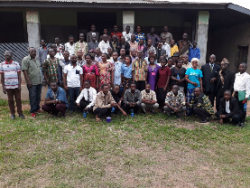 Photo: IUCN / Grace Baruka
Photo: IUCN / Grace Baruka
 Photo: IUCN / Grace Baruka
Photo: IUCN / Grace Baruka
Maintaining local context
The Mangai landscape GWG has been set up as a mechanism for dialogue between the different resource users and the stakeholders, allowing for reflection on the sustainable management of the natural resources with regards to the people who live there. The GWG will soon be finalised with the completion of its statutes and rules. Members and potential members of the GWG, local government, and ICCN demonstrate strong motivation for this process as they are seeking solutions to the degradation of natural resources in the landscape. However, it is essential to continue with the capacity building of GWG members so that they can fully achieve their role.
Although it has been adapted to the context of Mangai, it should be noted that the DRC's national strategy for community conservation in protected areas has been used as a foundational document in the process of creating the GWG.
